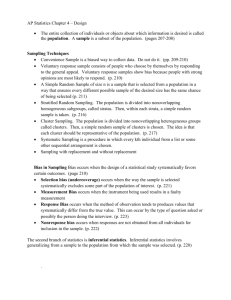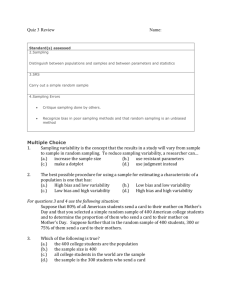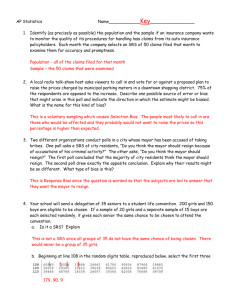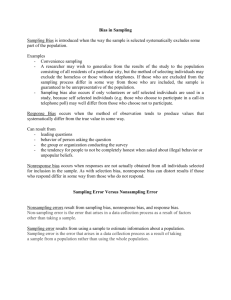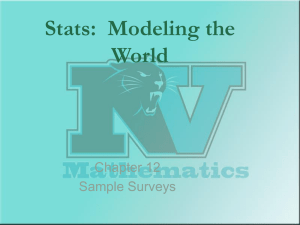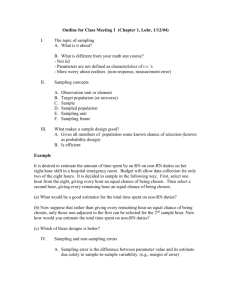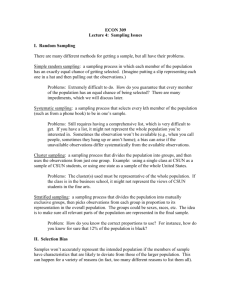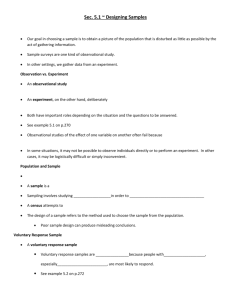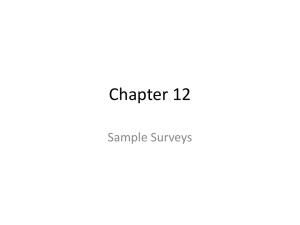Sample Surveys
advertisement
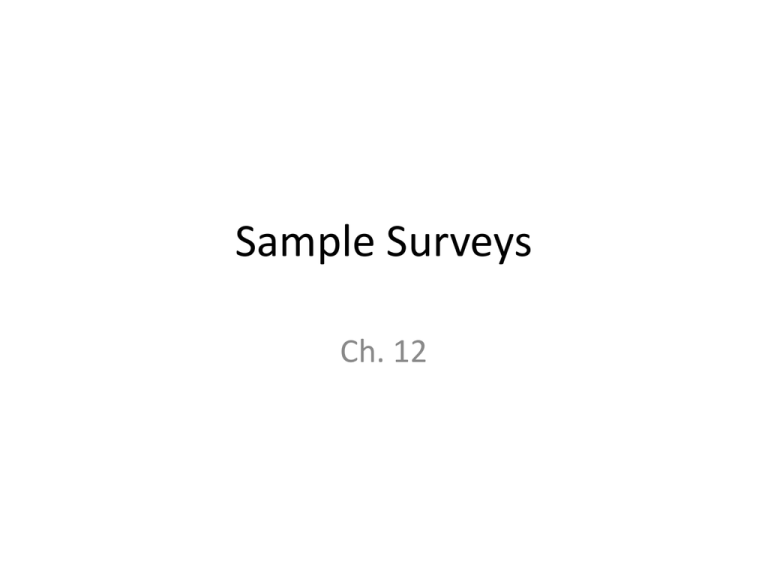
Sample Surveys Ch. 12 The Big Ideas 1. Examine a Part of the Whole 2. Randomize 3. It’s the Sample Size Examine a Part of the Whole Population -- the entire group of individuals that we want information about Sample -- a part of the population that we actually examine in order to gather information Sampling vs. Census Sampling • Studies a part to gain information about the whole • Powerful (when done correctly) Census • Attempts to gather information from every member of the population • Difficult • Time consuming • Expensive • (Sometimes) Impossible Methods of Sampling Good • Simple Random (SRS) • Stratified Random • Cluster • Multistage • Systematic Bad • Voluntary Response • Convenience Bad Sampling Methods Voluntary Response Sample – A large group is invited to respond and all who respond are counted – Internet polls, radio call in polls, etc. – Skewed toward extreme opinions Convenience Sample – Only include individuals who are convenient to sample – Lazy Good Sampling Methods Simple Random Samples (SRS) – Every individual has equal chance of being selected, every subgroup (of the desired sample size) has equal chance of being selected Good Sampling Methods (cont.) Stratified Random Sample – Divide the population into groups (strata) that are similar in some way – Choose a SRS in each stratum – Combine the SRSs from each strata to form the full sample Good Sampling Methods (cont.) Cluster Sample – Divide population into groups (aka clusters) – Randomly select clusters – All individuals in the chosen clusters are selected for the sample Good Sampling Methods (cont.) Systematic Sampling – Start the sample with a random selection – Select every nth person until you reach your sample size Good Sampling Methods (cont.) Multistage Sampling – A combination of different sampling methods Bias • The result of sampling methods that over or under emphasize some characteristic of the population Bias • It is very difficult to recover good data once bias is introduced • Spend the time/effort/money to ensure an unbiased Randomize • Randomizing our selection helps to ensure that on average the sample looks like the population Types of Bias Voluntary Response Bias – Survey participants self-select to be included in the survey Nonresponse Bias – Not everyone chosen for the survey responds Response Bias – Anything in the design that influences the responses


